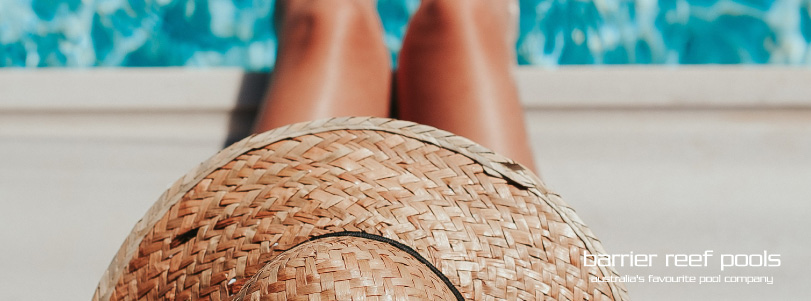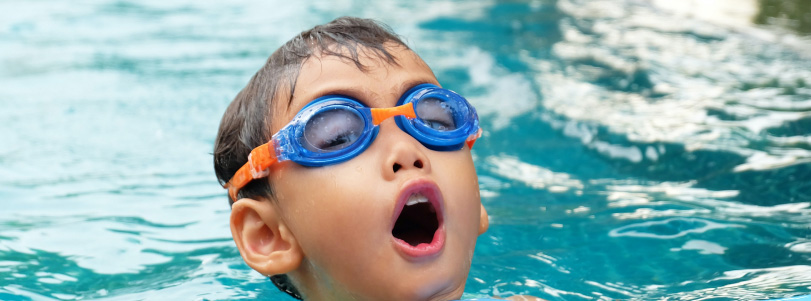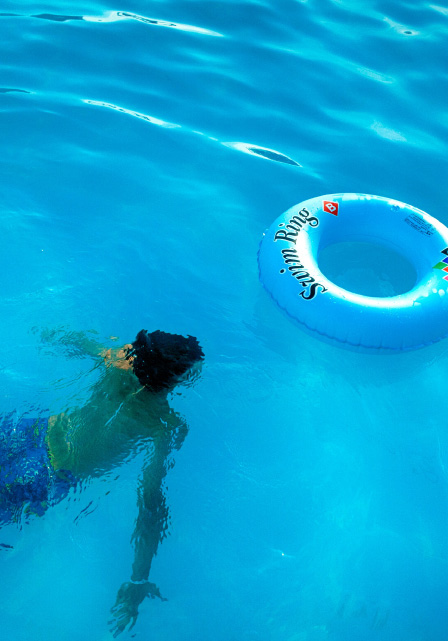A Brief Look Into The History Of Swimming Pools
Maybe you're interested in buying a new swimming pool. Perhaps you could already have a fibreglass pool installed in your home. Whether you're a new home pool owner or an old one, if you're here, that means you're interested in the history of swimming pools. Who built the first pool? Where was it built? How did it develop into the swimming pools that we recognise today? Read on.

Early History Of Swimming Pools
It’s believed that the first ‘Great Bath’, found in what used to be Mohenjo Daro, but is today Pakistan, is the first ‘swimming pool’ to have been built. This was during the 3rd millennium BC. This is a pool that is 12 by 7 meters. It’s lined using bricks and the sealant that was used to cover it was tar-based.
It wasn’t just the people of Mohenjo Daro that enjoyed the benefits of swimming pools. Both the Ancient Romans and the Greeks also built pools that were artificial. These were mainly used for athletic training, within the palaestras. Pools were also used for nautical games as well as military exercises.
If you were a Roman emperor, you might have your very own pool. Sometimes, fish might also be kept in such private swimming pools. This is also why one of the Latin words associated with pools was ‘piscina’. The first heated pool was also built early on, in the 1st century BC. This was built by a man named Gaius Maecenas of Rome. He was a wealthy Roman lord and was considered by many to be a patron of the arts.
Pools have also been found that were built by the Ancient Sinhalese. These pools came in pairs and were known as ‘Kuttam Pokuna’. These were built in Sri Lanka in the 4th Century BC, in the kingdom of Anuradhapura.
Swimming Pools And Their Early Modern History
The Olympic Games that people know so well today first started in the year 1896. Swimming was one of the events at the Games, following which the popularity of swimming pools started to grow. In Britain, swimming pools became popular in the mid-19th century. In London alone, in 1837, there were at least six indoor swimming pools that also had diving boards.
The oldest swimming club in Britain that is still surviving is the Maidstone Swimming Club, located in Maidstone. This Club was formed in the year 1844. This was as there were concerns that people might drown in the River Medway. This was especially as people who tried to rescue those drowning would drown themselves, as they couldn’t reach safety in time.

The Club would hold diving competitions, races as well as water polo matches. In the year 1844, The South East Gazette reported in July that an aquatic breakfast party had taken place. Both coffee, as well as biscuits, were being served on the river in a floating raft.
Following this, in the year 1869, the Amateur Swimming Association was founded in England. The Oxford Swimming Club was formed in 1909. Indoor baths were available in Merton Street’s cobbled paths. This might have inspired people to bathe there. Over time, bathers became swimmers. The bathing pools that were built for them turned into swimming pools.
The Modern History of Swimming Pools
In 1907 in the United States, a clubhouse known as the Racket Club of Philadelphia was founded. It’s known for having one of the first above-ground swimming pools, anywhere in the world. In 1906, the first swimming pool that sailed on the ocean in an ocean liner set sail. This was in the Adriatic, from the White Star Line.
It wasn’t until the end of the Second World War that swimming pools at homes became popular in the US. The Book Contested Waters: A Social History Of Swimming In America revealed that the Cabot Street Bath located in Boston was the first ever pool to be built in the US. This was opened in the year 1868 and was responsible for serving a neighbourhood where most homes didn’t have baths.
Later in the 20th century, various leaps in science and technology took swimming pools to a whole new level. Chlorination systems and filtration systems were discovered, and these could deliver clean water to the pools. Before this discovery, the best people could do was manually remove all the water in the pool and then refill it.

Swimming Pools And Australia
Australia participated in the Olympic Games in 1900, and since then they continued to participate. This means that they were active in the swimming world when indoor swimming pools were first introduced at the Games in London in 1908. In the Olympic Tournament that happened in Paris, the Australian representative, Frederick Lane, won two gold medals.
Following this, swimming pools became more and more popular in Australia.
Innovation And Swimming Pools
When manufacturers knew that there was a market for residential fibreglass swimming pools, innovators entered the scene. In the 1950s, the skimmer system was first invented, and it’s still used commonly today. It took a while for filters like sand filters and cartridge filters to reach the stage they are currently in. They went through several iterations before taking their present shape.
One of the most notable developments, when it came to swimming pools, was the salt water chlorination system. This allowed people to have a pool that was sanitised, without needing to add chlorine to the pool on a regular basis.
Conclusion
Today, there are several different kinds of innovations in the pool industry. From automatic pool cleaners to smart pool pumps, people are finding ways to improve the experience people have with home pools.
People have been building swimming pools since ancient times, although before they played the role of bathing pools. Over time, bathing pools turned into swimming pools, and swimming became an activity that many homeowners enjoyed participating in. From lounging next to the pool for tanning, to swimming laps in the pool to get a good workout, there are several ways you can enjoy your fibreglass pool.
A Brief Look Into The History Of Swimming Pools
Maybe you're interested in buying a new swimming pool. Perhaps you could already have a fibreglass pool installed in your home. Whether you're a new home pool owner or an old one, if you're here, that means you're interested in the history of swimming pools. Who built the first pool? Where was it built? How did it develop into the swimming pools that we recognise today? Read on.

Early History Of Swimming Pools
It’s believed that the first ‘Great Bath’, found in what used to be Mohenjo Daro, but is today Pakistan, is the first ‘swimming pool’ to have been built. This was during the 3rd millennium BC. This is a pool that is 12 by 7 meters. It’s lined using bricks and the sealant that was used to cover it was tar-based.
It wasn’t just the people of Mohenjo Daro that enjoyed the benefits of swimming pools. Both the Ancient Romans and the Greeks also built pools that were artificial. These were mainly used for athletic training, within the palaestras. Pools were also used for nautical games as well as military exercises.
If you were a Roman emperor, you might have your very own pool. Sometimes, fish might also be kept in such private swimming pools. This is also why one of the Latin words associated with pools was ‘piscina’. The first heated pool was also built early on, in the 1st century BC. This was built by a man named Gaius Maecenas of Rome. He was a wealthy Roman lord and was considered by many to be a patron of the arts.
Pools have also been found that were built by the Ancient Sinhalese. These pools came in pairs and were known as ‘Kuttam Pokuna’. These were built in Sri Lanka in the 4th Century BC, in the kingdom of Anuradhapura.
Swimming Pools And Their Early Modern History
The Olympic Games that people know so well today first started in the year 1896. Swimming was one of the events at the Games, following which the popularity of swimming pools started to grow. In Britain, swimming pools became popular in the mid-19th century. In London alone, in 1837, there were at least six indoor swimming pools that also had diving boards.
The oldest swimming club in Britain that is still surviving is the Maidstone Swimming Club, located in Maidstone. This Club was formed in the year 1844. This was as there were concerns that people might drown in the River Medway. This was especially as people who tried to rescue those drowning would drown themselves, as they couldn’t reach safety in time.

The Club would hold diving competitions, races as well as water polo matches. In the year 1844, The South East Gazette reported in July that an aquatic breakfast party had taken place. Both coffee, as well as biscuits, were being served on the river in a floating raft.
Following this, in the year 1869, the Amateur Swimming Association was founded in England. The Oxford Swimming Club was formed in 1909. Indoor baths were available in Merton Street’s cobbled paths. This might have inspired people to bathe there. Over time, bathers became swimmers. The bathing pools that were built for them turned into swimming pools.
The Modern History of Swimming Pools
In 1907 in the United States, a clubhouse known as the Racket Club of Philadelphia was founded. It’s known for having one of the first above-ground swimming pools, anywhere in the world. In 1906, the first swimming pool that sailed on the ocean in an ocean liner set sail. This was in the Adriatic, from the White Star Line.
It wasn’t until the end of the Second World War that swimming pools at homes became popular in the US. The Book Contested Waters: A Social History Of Swimming In America revealed that the Cabot Street Bath located in Boston was the first ever pool to be built in the US. This was opened in the year 1868 and was responsible for serving a neighbourhood where most homes didn’t have baths.
Later in the 20th century, various leaps in science and technology took swimming pools to a whole new level. Chlorination systems and filtration systems were discovered, and these could deliver clean water to the pools. Before this discovery, the best people could do was manually remove all the water in the pool and then refill it.

Swimming Pools And Australia
Australia participated in the Olympic Games in 1900, and since then they continued to participate. This means that they were active in the swimming world when indoor swimming pools were first introduced at the Games in London in 1908. In the Olympic Tournament that happened in Paris, the Australian representative, Frederick Lane, won two gold medals.
Following this, swimming pools became more and more popular in Australia.
Innovation And Swimming Pools
When manufacturers knew that there was a market for residential fibreglass swimming pools, innovators entered the scene. In the 1950s, the skimmer system was first invented, and it’s still used commonly today. It took a while for filters like sand filters and cartridge filters to reach the stage they are currently in. They went through several iterations before taking their present shape.
One of the most notable developments, when it came to swimming pools, was the salt water chlorination system. This allowed people to have a pool that was sanitised, without needing to add chlorine to the pool on a regular basis.
Conclusion
Today, there are several different kinds of innovations in the pool industry. From automatic pool cleaners to smart pool pumps, people are finding ways to improve the experience people have with home pools.
People have been building swimming pools since ancient times, although before they played the role of bathing pools. Over time, bathing pools turned into swimming pools, and swimming became an activity that many homeowners enjoyed participating in. From lounging next to the pool for tanning, to swimming laps in the pool to get a good workout, there are several ways you can enjoy your fibreglass pool.


